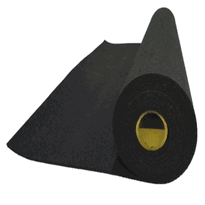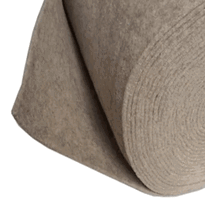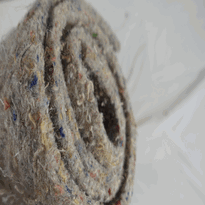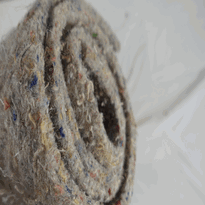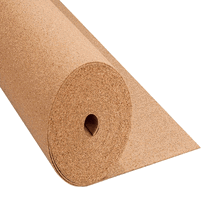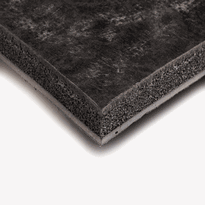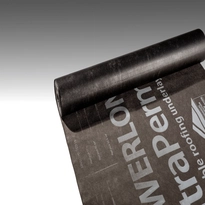Wool Underlay
Wool underlay is an environmentally friendly flooring component crafted from recycled wool, textiles, and natural fibres such as jute. By utilising these sustainable materials, it helps to divert waste from landfills and eliminates the need for synthetic chemicals.
This underlay offers exceptional thermal insulation and acoustic dampening, thanks to tiny air pockets within the fibres that trap heat and sound. These features contribute to increased comfort and energy efficiency within indoor spaces. Its natural properties make it resistant to odours and highly effective at moisture-wicking, supporting long-lasting performance.
Prices for wool underlay vary depending on quality and thickness, so understanding available options and proper installation techniques is essential for achieving optimal results. When installed correctly, wool beneath provides sustainable benefits that promote healthier indoor environments and improve overall living comfort.
Further insights into effective use and maintenance can help maximise its performance, ensuring it remains a reliable and eco-conscious choice for UK homes and commercial spaces.
Environmental Advantages of Wool Underlay
Wool underlay offers numerous environmental benefits that support sustainable flooring practices. It's produced using recycled wool and upcycled textiles, thereby avoiding the use of virgin plastics and synthetic chemicals. This process helps minimise landfill waste by repurposing factory offcuts and natural fibres such as jute. Made from upcycled waste materials, wool underlay restricts the need for new raw material extraction, further diminishing its ecological impact. Additionally, eco-friendly manufacturing technologies further enhance its environmental credentials by reducing emissions and energy consumption during production.
Since no harmful chemicals are involved in its manufacture, wool underlay aligns with responsible resource management principles.
Wool underlay is biodegradable, meaning it naturally breaks down after disposal, and remains recyclable, endorsing circular economy concepts by allowing reuse or composting without harming the environment.
Its production requires less energy compared to synthetic alternatives, resulting in reduced greenhouse gas emissions. Additionally, utilising existing materials and promoting local upcycling activities further decreases the carbon footprint associated with its manufacture.
Collectively, these factors foster a more sustainable and environmentally friendly approach to flooring, benefitting ecosystems and future generations across the UK.
Insulation and Acoustic Benefits
Thanks to its unique fibrous structure, wool underlay offers notable thermal insulation and moisture regulation qualities, enhancing overall comfort and energy efficiency within indoor spaces. Wool fibres contain numerous tiny air pockets that serve as natural insulators, aiding in retaining heat during colder months and maintaining a comfortable temperature during warmer periods. This insulation capability can significantly reduce energy costs associated with heating and cooling. Moreover, wool’s moisture absorption and release properties prevent excess dampness, which helps to minimise temperature fluctuations and sustain consistent warmth. Wool’s moisture regulation properties also contribute to a healthier indoor environment by preventing mould growth. The crimped nature of the fibres also disperses pressure points, increasing comfort and reducing discomfort during sleep. Wool’s inherent sound-absorbing capabilities further contribute to creating a quieter environment. While primarily valued for its thermal qualities, wool’s fibre structure also amplifies acoustic performance by dampening noise, fostering a peaceful and restful indoor atmosphere.
Enhancing Comfort and Durability
The natural resilience and adaptable qualities of wool underlay play a vital role in boosting both comfort and longevity over time. Wool fibres offer consistent cushioning by minimising pressure points, which is particularly beneficial for individuals experiencing chronic pain or heightened sensitivity. Its elasticity helps it retain its shape, preventing compression and matting, thus ensuring reliable performance. Moreover, wool's robust fibres are resistant to wear and tear, thereby extending the lifespan of the underlay. Its inherent resistance to odours and stains also helps maintain a fresh appearance for longer periods without the need for frequent replacement. Wool's moisture-wicking ability, a key feature, further prevents dampness from building up under the mattress, contributing to overall hygiene and comfort. This moisture management property is especially important in environments with higher humidity or for individuals with sensitivities to dampness.
Cost and Practicality Considerations
Cost considerations for wool underlays involve several factors that affect overall expenses. Material costs usually range from £3.50 to £11.00 per square metre, depending on the quality and source, with options like Nature's Felt offering environmentally friendly choices. Wool Carpet Cost per Square Foot by Brand Compared to alternatives such as luan plywood, which costs between £4.50 and £6.50 per square metre, wool is generally more expensive but provides enhanced benefits. Incorporating a variety of insulation options can help optimize energy-efficient performance in building projects.
Installation charges vary from approximately £6.50 to £14.00 per square metre, depending on labour rates and the complexity of the work.
- Wool delivers long-term value through durability and superior carpet performance, which helps justify the initial outlay.
- Its moisture resistance and insulation capabilities can lead to reductions in future energy expenditure.
- The total installed cost includes material, installation, and potentially additional tools or adhesives, so careful budgeting is essential for a comprehensive comparison. [Wool Underlay Cost by Brand
Conclusion
Wool underlay provides a range of practical benefits, including enhanced insulation and soundproofing, which improve energy efficiency and comfort in any space. Its natural properties contribute to durability and long-term performance, making it a dependable flooring choice. Although initial costs may be higher, its environmental advantages and resilience can offset expenses over time. Carefully considering practicality and budget will help determine its suitability for specific applications, ensuring an informed and effective flooring solution.

